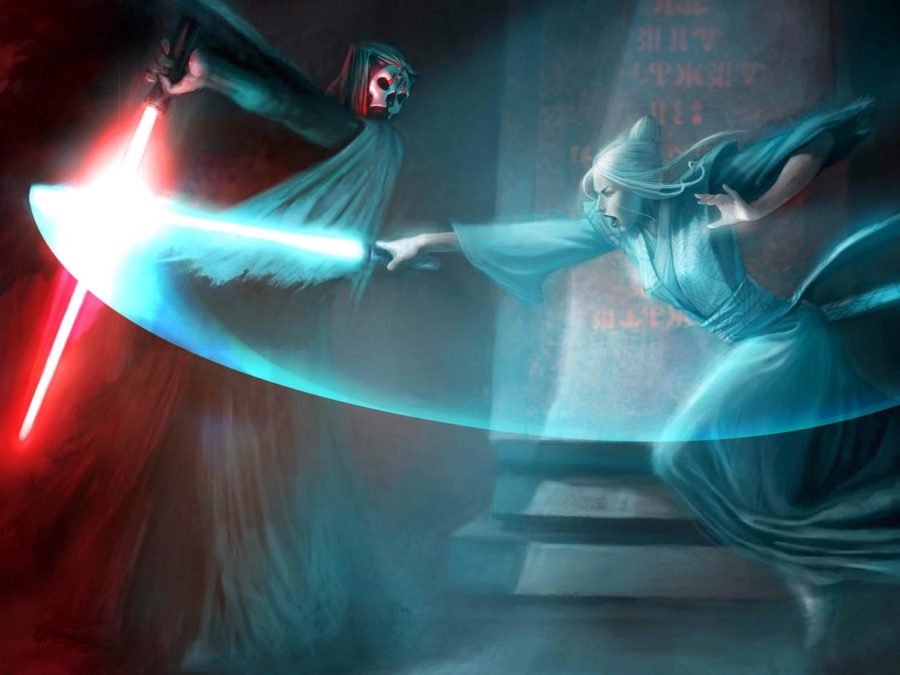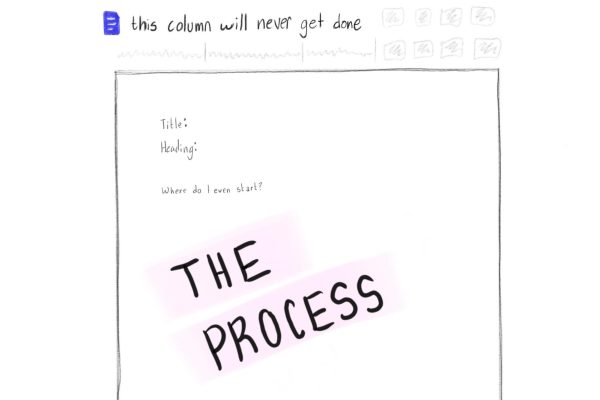Column: Clearing Galaxy-wide shadows
“Once more the Sith shall rule the galaxy!” -Sheev Palpatine
Editor’s note: In honor of May the 4th, one staff member looks at Star Wars from a certain point of view.
——————————————————————————
“Many of the truths we cling to depend greatly on our own point of view.”
–Obi Wan Kenobi
To most it’s just an old man’s ghost defending his choice to attempt to murder his brother, then lie about it to his nephew. But it’s more than that. Perhaps that line from “Return of the Jedi” is more than a honestly poor excuse from an old man trying to defend his mistakes. That line is our hint that the story being told in a Galaxy Far, Far Away is not everything it seems. There is more to the tale of “Star Wars” than we thought. The ever-esteemed Jedi and the Republic are not who they claim to be, and the Empire are the true heroes of Star Wars.
Let’s start with proving that the Empire is not evil. In “A New Hope,” Luke Skywalker and the crew of rebels manage to destroy the Death Star, which, for those who aren’t aware, was a space station with the capability to eradicate entire planets. The Death Star, contrary to the name, was designed to be a deterrent to resistance, rather than the means to end it. Its massive destructive capability had the Rebellion cowering in fear, to the point where most of the Rebel leaders wanted to abandon the cause. Some could claim this weapon’s existence is enough to condemn any party, but the Canon of Star Wars supports the contrary.
Five years after the formation of the Galactic Empire, newly appointed Grand Moff Wilhuff Tarkin gave a speech, known as the Tarkin Doctrine, in which he lined out why the Republic needed to be reorganized and how to prevent the uprisings which threatened the peace. He stated: “Rule through the fear of force rather than through force itself.” The plan was to intimidate any and all enemies of the state rather than just annihilate said enemies, because if you go around demolishing planets that have insurgents on them, you eventually won’t have planets to govern.
Meanwhile, look at the rebellion. The first cells of the rebellion formed when the Jedi began teaching oppressed communities on how to fight back against the Separatist movement, which was seen as evil by the Jedi. The rebellion would then go on to fully break away from the Empire, and kill millions of Imperial workers in calculated strikes. This rebellion, were we to compare it to real-world strifes, would look more like a terrorist crew than a noble campaign to fight oppression. “But wait,” I can hear you saying, “The Emperor and the Empire are evil, heartless beings! The rebellion is fighting for peace, freedom and security throughout the Galaxy.” To which I say, kudos on the “Revenge of the Sith” reference, and be prepared to have your world shaken.
I present to you Chimamanda Adichie, a Nigerian author who in 2009, performed a moving TED talk entitled “The Danger of a Single Story.” In this talk, Adichie highlights that we cannot take any story at face value, and that we have to hear the story from all sides before we can truly make judgement on any party.
Using that mindset, we can look from the eyes of the Empire. They spent years attempting to bring peace, security and freedom to an unstable Theocracy that was rotting from within long before the so-called Sith Menace invaded, only to have their efforts halted by a group of terrorists upsetting the peace in order to “preserve” it.
When one talks about the Empire being good, one has to remember and acknowledge one of the most tragic scenes in all of Star Wars: Order 66. A newly appointed Darth Vader purges the world of the hierarchical Jedi Order, and with that, The Empire is born. This act is quite condemning by most standards, but when you consider the fact that the Jedi attempted to murder Palpatine without giving him trial because his interests were different from theirs, killing them starts to seem reasonable.
It is common knowledge that the Sith had two goals: Eternal Life and Defeating the Jedi Order. The Jedi also had two fairly commonly known goals: Spiritual Ascendance and Defeating the “evil” Sith. While it would be natural for both sides to want the same thing, being the destruction of the opposing order, the quest for eternal conscience from each side is downright uncanny. The issue is, both the Jedi and the Sith are flawed. Neither can ever truly defeat the other. Without Dark, there is no Light, and without Light, there is no Dark. So were the Jedi to bring balance to the force, they would have to allow the sith order to survive.
This Revelation poses one question: If both sides were flawed, which side is the right side? The answer is simple: the middle. This might sound like a bit of a cop out rather than a definitive answer, but the thing is, the lore of Star Wars holds the proof we need, if you are able to dig through it and not lose your sanity. Fortunately, I have done just that.
“If one is to understand the great mystery, one must study all its aspects, not just the dogmatic, narrow view of the Jedi.”
–Chancellor Sheev Palpatine
It is a shocking trend that those who study both the light and dark sides of the force have more power than those who look at a single side and tend to come out on top in conflicts. If I had the time I could go on about the Bendu and Grey Jedi, but instead, we will look at one exemplary example: Emperor Sheev Palpatine. Palpatine was the sole mind behind the Empire’s rise, and knew both the Jedi Path and the Secrets of the Sith. Due to his immense knowledge, Palpatine was able to single-handedly take a system which for thousands of years had struggled to hold the Republic together, replace it, and unify the galaxy for the first time in recorded history. Palpatine was able to see the flaws in both the light and the dark, and use the best of each side to put himself in a position of supreme power.
Were someone to agree with all the evidence presented, they would say “You might be right, but Chancellor Palpatine is Evil!” to which I say, again, Kudos on the Revenge of the Sith reference, and while yes, palpatine is probably more evil than good, that doesn’t mean the whole of the Empire was evil. Compare the Empire to the United States. We have had some truly malignant leaders in our time, but does that mean that we are a corrupt and detestable country? No. It does not. One leader can’t condemn an entire government, even when that one person IS the largest force in the government.
Perhaps George Lucas meant for someone to put all of this together. Perhaps that is an underlying theme of the whole franchise: everything is relative and refusing to learn knowledge of some form will lead to the downfall of civilization. Perhaps it is that our perspective determines what we think the truth is, or that everything is nothing more than what we make of it. That, or it really was just a starving director wanting to make his dream a reality.
Star Wars is a timeless franchise. For more than 40 years, our favorite band of heroes have provided a world for fans to immerse themselves in. We have millions of hours worth of material to enjoy, hundreds upon thousands of Wiki pages to delve into, and far more knowledge of Imperial laws and practices than could ever be needed. Star Wars is one of the few things almost anyone on the planet can relate to, and for 40 years, and hopefully at least 40 more, it will continue to be just that.
“The Force will be with you. Always.”
–Obi Wan Kenobi














Mimi • May 4, 2018 at 6:40 PM
This is the best review of Star Wars that I have read since I first saw it with your Mom 40 years ago, Way to go Hayden, Good job.